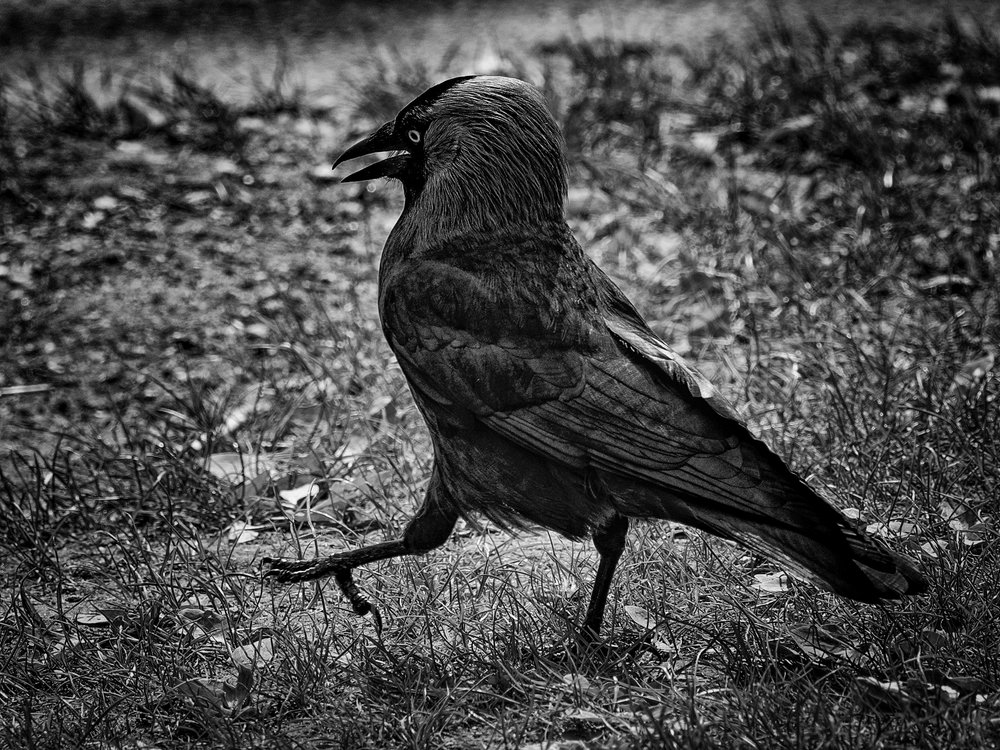
Now I am no wildlife photographer. That much will soon become obvious. Unlike my colleague David Bailey, I don’t spend hours lurking in the urban reaches of the River Dee. Nor do I possess a lens that is remotely suitable for close-up photography of even horses without frightening them off. Even worse, I haven’t a clue about different species (perhaps that’s why I don’t do wildlife…).
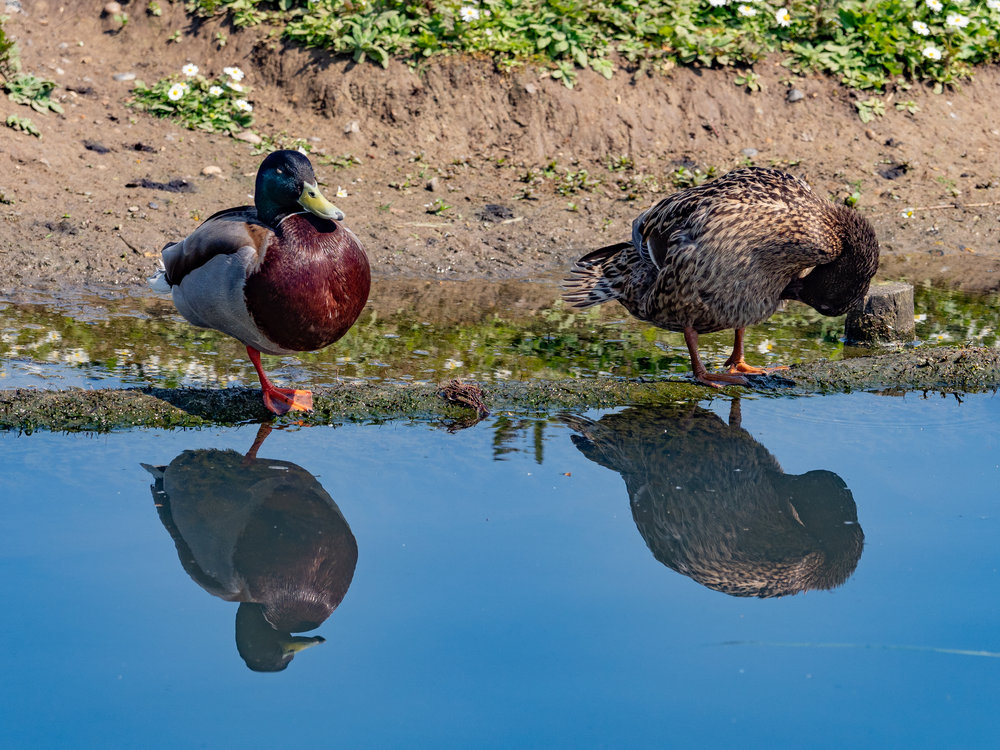
But when a suitable lens is thrust upon me by Olympus, I feel I must make an effort. I didn’t want to be too wild, though. I prefer my wildlife served up on a plate — not literally, of course, but packaged conveniently in a (preferably) urban setting not too far removed from civilisation. I like to point my lens and know that all the wildlife is just waiting to frolic before my front element. Minumum effort.
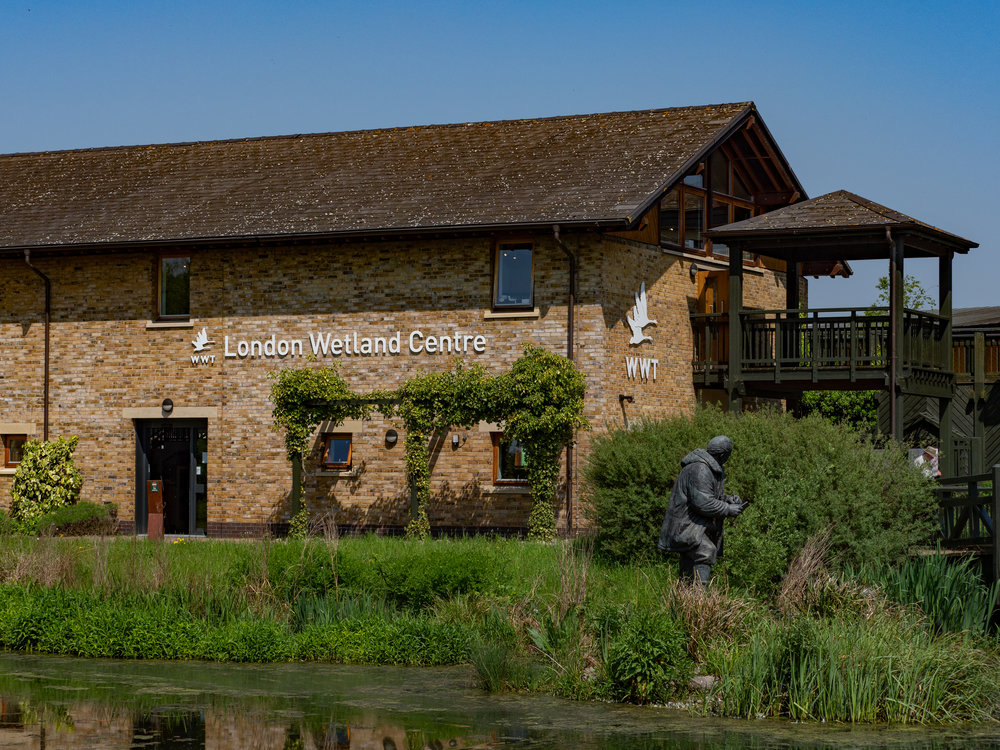
Wetland
Fortunately, such a Shanghai-La does exist in London and within easy strolling distance of home. The London Wetland Centre is barely five miles from Piccadilly Circus but it is an ideal location for testing a new telephoto lens among throngs of birds and ponds full of ducks.
In contrast with a zoo, all the residents and temporary lodgers at the Wetland Centre are there because they choose to be. Most of them can fly off when the fancy takes them and, I imagine, they do. What always mystifies me is that birds of a feather flock together in their own little habitats when they could easily flutter off to some other birds’ domain. I suppose that’s what the old saying is about, anyway. Someone must have noticed this before I came along, all wide-eyed and impressionable.
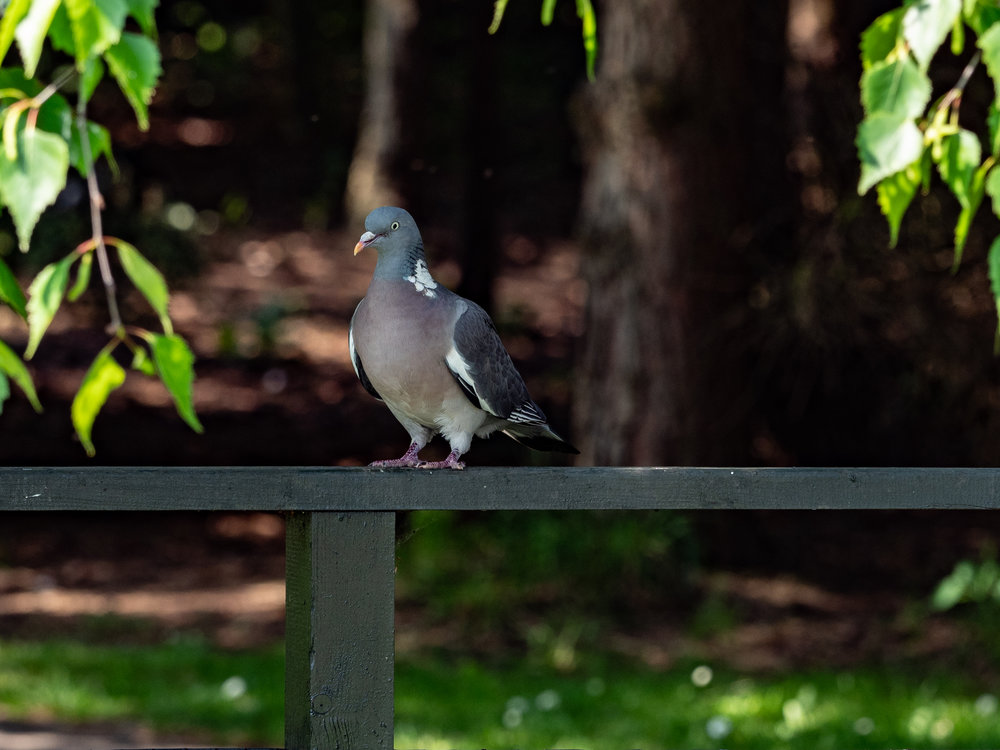
The lens in question is the 40-150mm f/2.8 Pro M.Zuiko Digital ED (for short) and it is attached to an OM-D E-M1 MkII, both tongue twisters kindly loaned by the manufacturer. Again, I must emphasise that I am not experienced with telephoto lenses, I’m more of a get-up-close 50mm prime man. So if the results of my wildlife excursion are bad please lay the blame at my feet. If they are acceptable, I take no credit. Send the plaudits to Olympus. Equally, my lack of experience means I can’t compare this lens with others. There are longer, more expensive, fatter and heavier lenses that no doubt do incrementally better jobs. But this is the ideal all-round sporting zoom for my tastes.
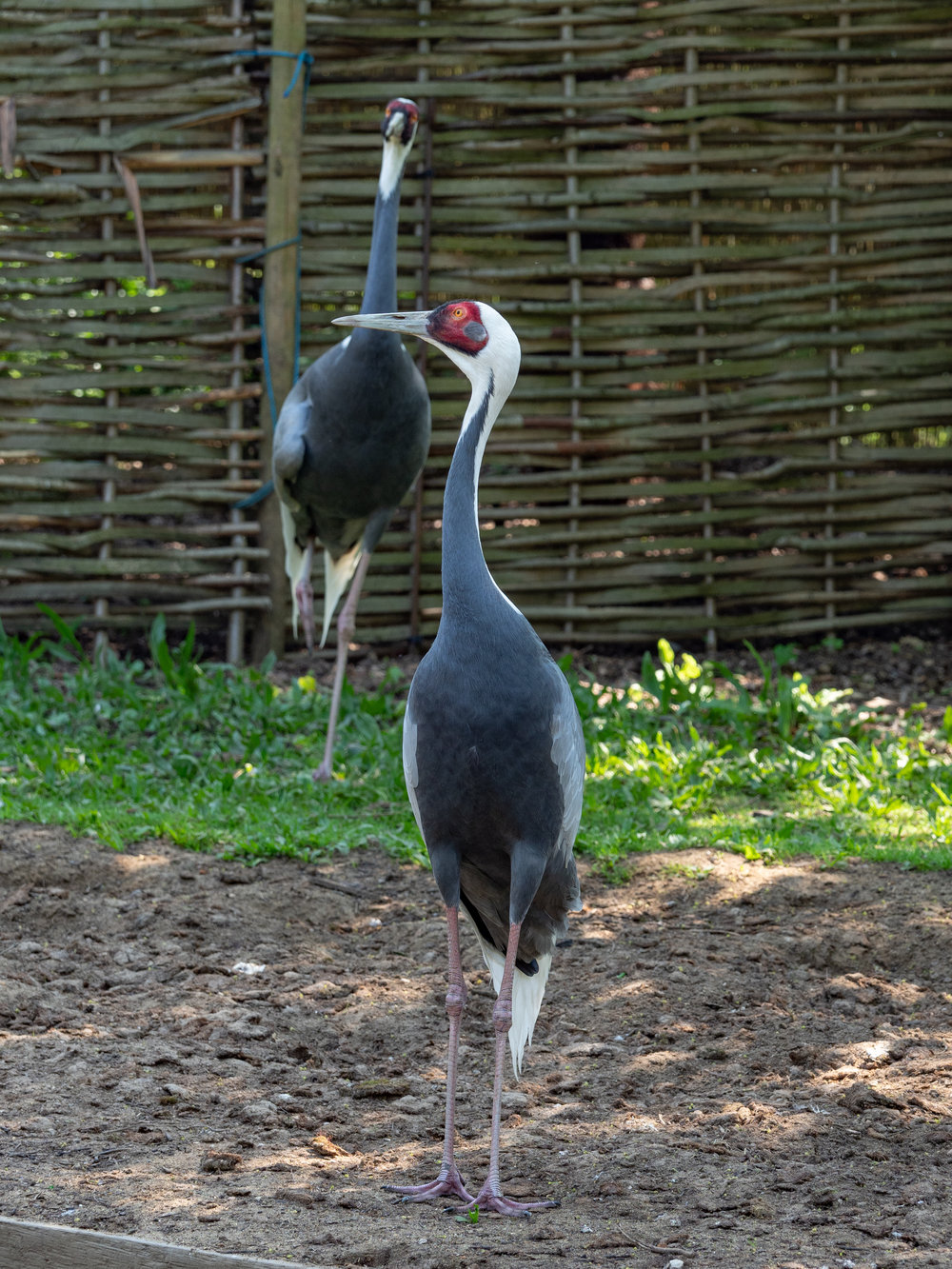
Remarkable
By micro four-thirds standards, the 40-150 is quite bulky and heavy — 880g in weight and 150mm long. It offers a full-frame equivalent range of 80-300mm. But it is a lightweight compared with equivalent glass for full-frame or, even, APS-C cameras. It is a pro lens, weather sealed, well constructed and yet costs just a tad over £1,000. That’s remarkable value for what it does. By contrast, the also new Leica DG 50-200mm f/2-4 has a 33% longer reach but tips the scales at only 655g and is a mere 132mm long (at rest, that is, but see below). it’s also 50% more expensive.
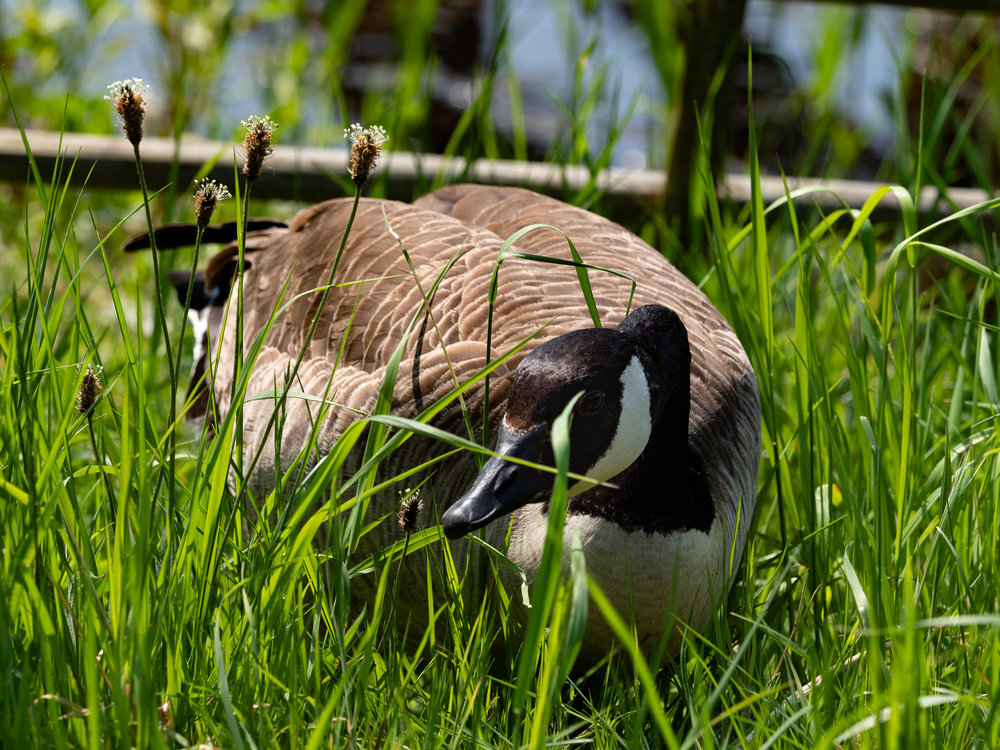
Aesthetically, the M.Zuiko Pro in common with its siblings is rather fussy and over-decorated, with a raft of explanatory engravings. I tend to prefer the blander styling Panasonic and Leica have adopted with their m43 and APS-C zooms. Yet unlike the external focusing Panasonic lens, the Olympus PRO does its bit entirely internally. Although it is a long lens, it doesn’t get any longer. I like that, but it has to be said that external focusing designs do tend to take up less bag space.
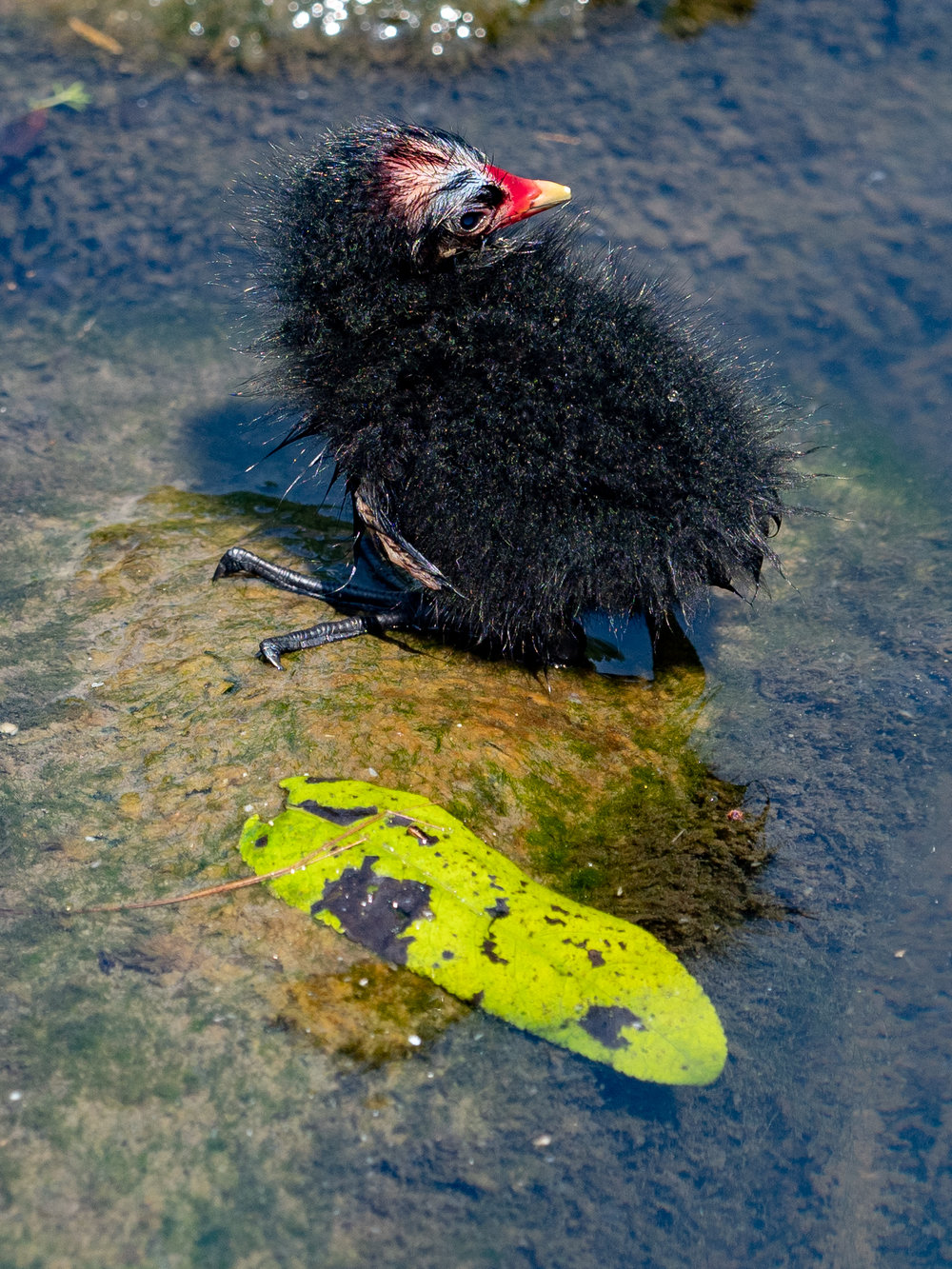
Constant f/2.8
Another reason for the Olympus zooms’ larger dimensions is the constant f/2.8 focal length. Everything is a compromise in lens design, although the Olympus PRO lenses are less compromised than most. The designers have gone all out for maximum aperture and ignored the physical consequences. The Leica DG zooms, in contrast, are deliberately designed to a slower f/2.8-4.0 focal range (that’s one-stop slower at the long end), primarily to reduce bulk and weight. It’s a toss-up which I prefer, and there are merits in both approaches.
After this outing to the Wetland, though, there is no doubting the capability of the Olympus 40-150mm zoom. Almost all these shots are taken at the maximum reach of 300mm (equivalent), and the sharpness is remarkable, even right up against the stop like this.
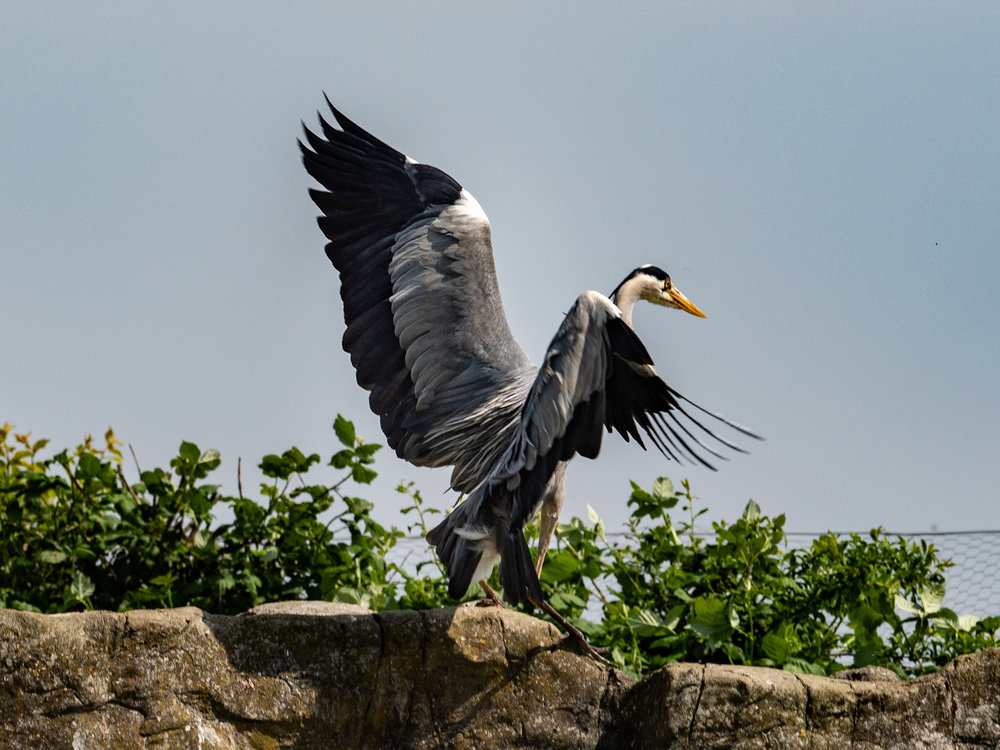
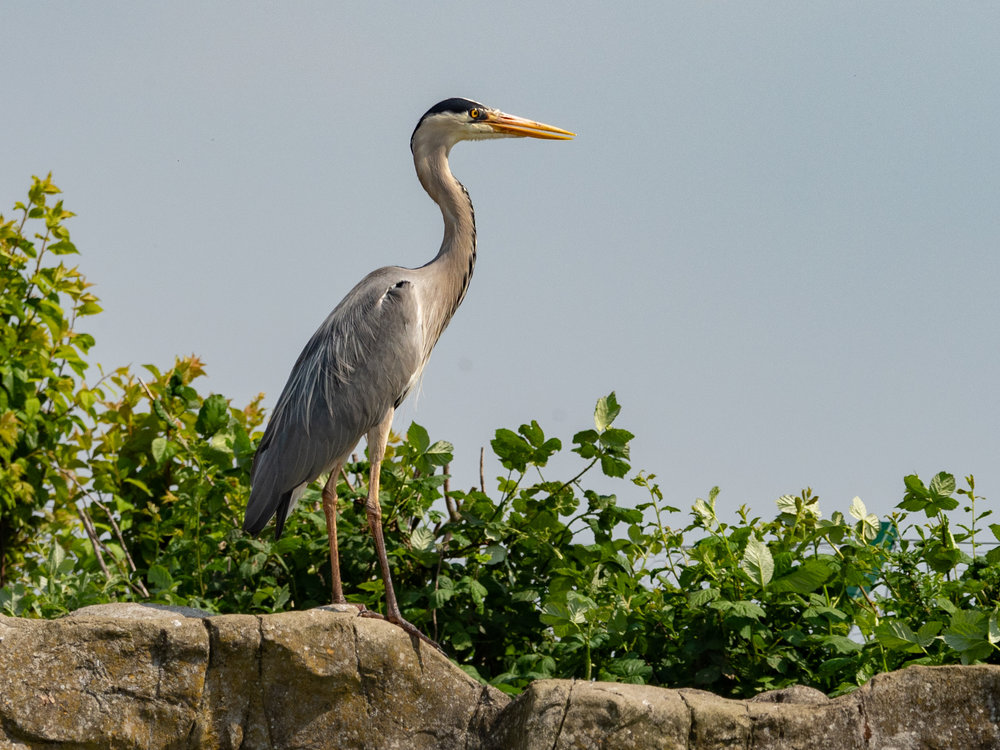
At the Wetland Centre, though, I wasn’t using the widest apertures on the sunny day I visited. Most of the time I set the camera to f/5.6, dialled in ducks-arse recognition and fired away. The camera and lens did a remarkably speedy and accurate job of focus on moving birdies. This is a rather exciting photographic alternative to my usual practised manipulation of a manual Leica M lens through the split-image rangefinder. Fortunately, the OM-D and this lens are built for speed and excel in sports or wildlife photography.
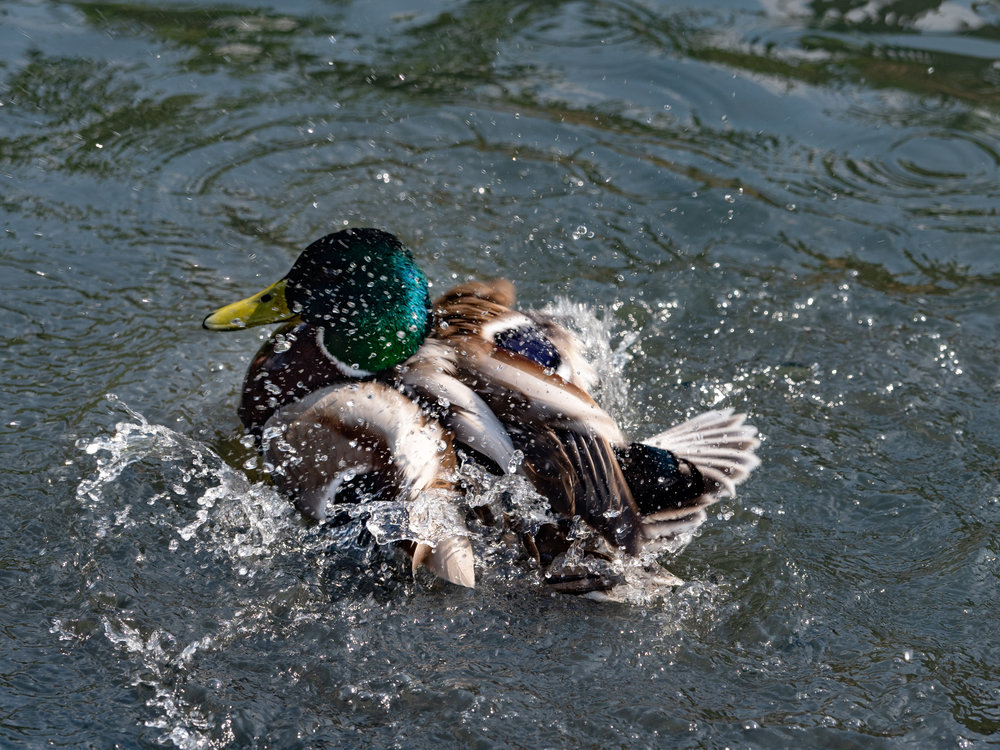
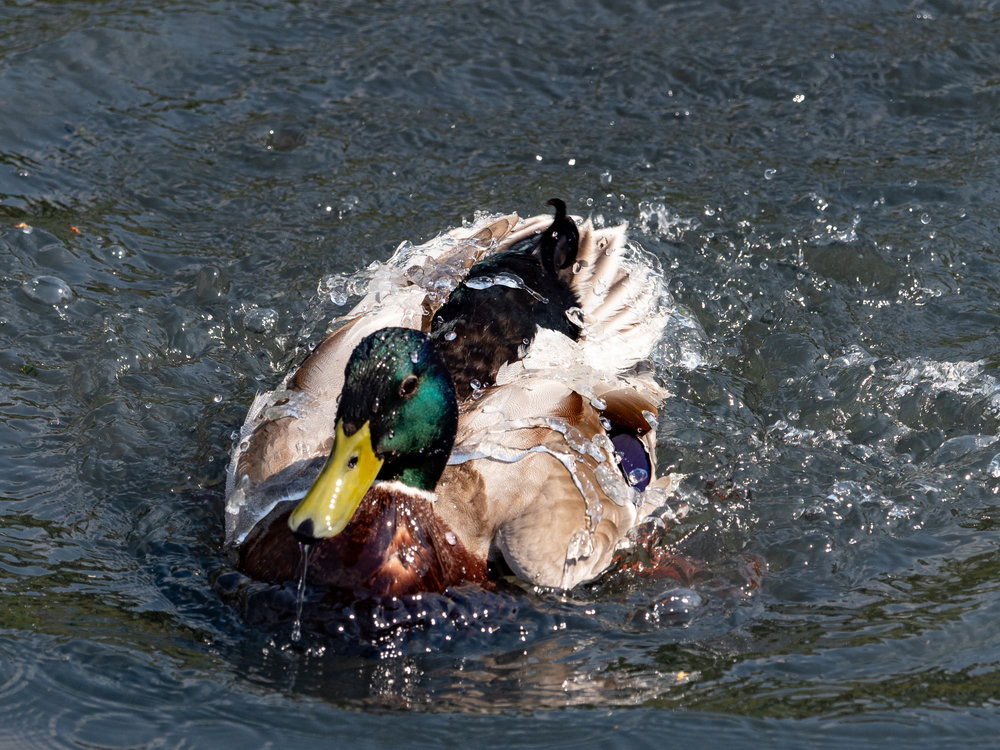
I’ll be reporting on the camera and three lenses (this 40-150, the 12-40mm PRO and the f/1.2 25mm prime) in due course. And in the meanwhile, I’d better brush up on my wildlife photography.
And more of my first efforts
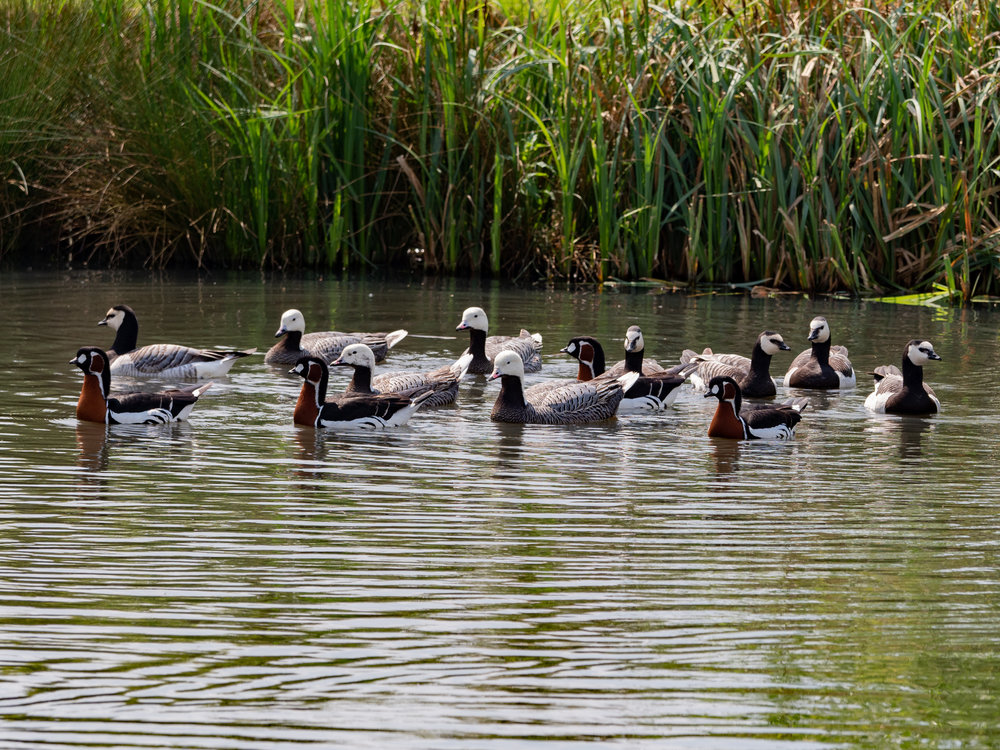
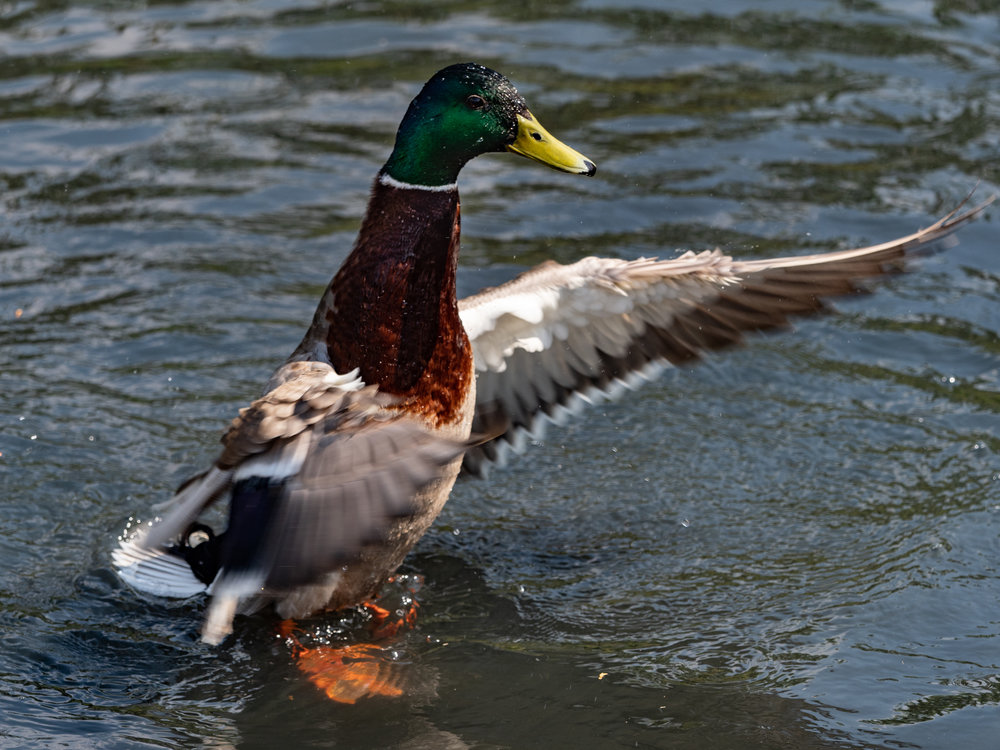
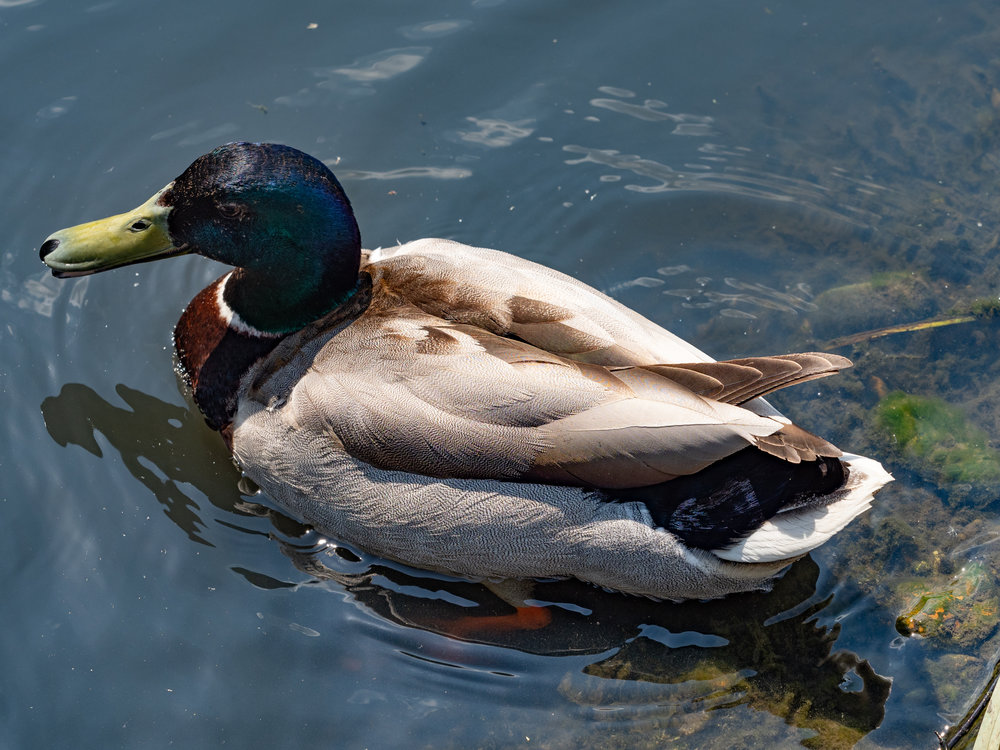
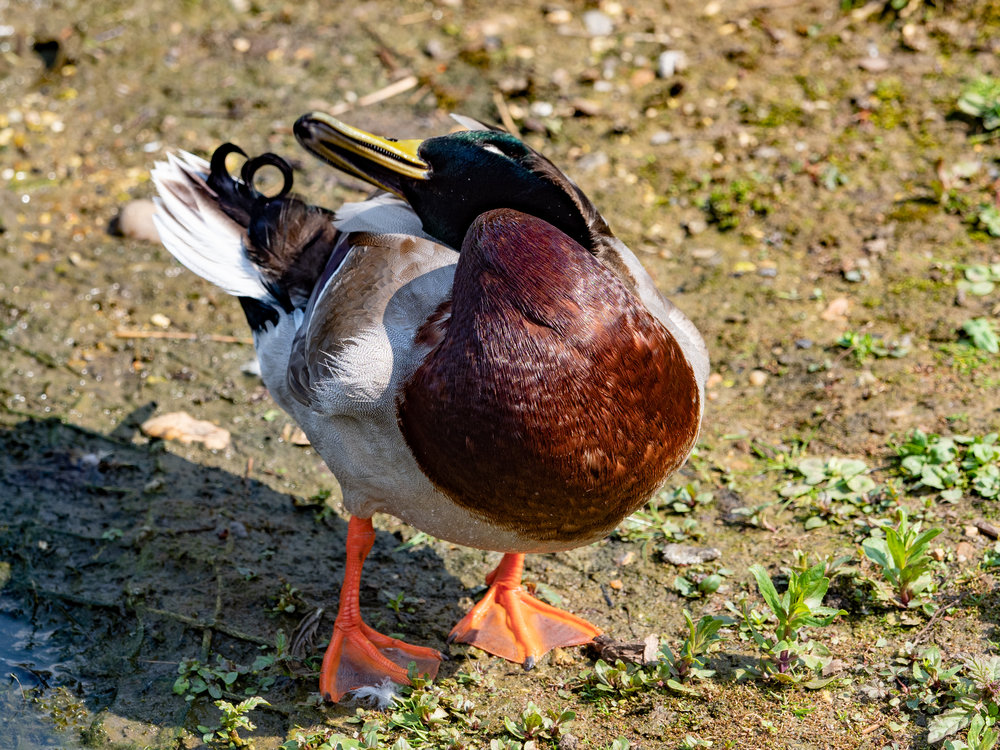
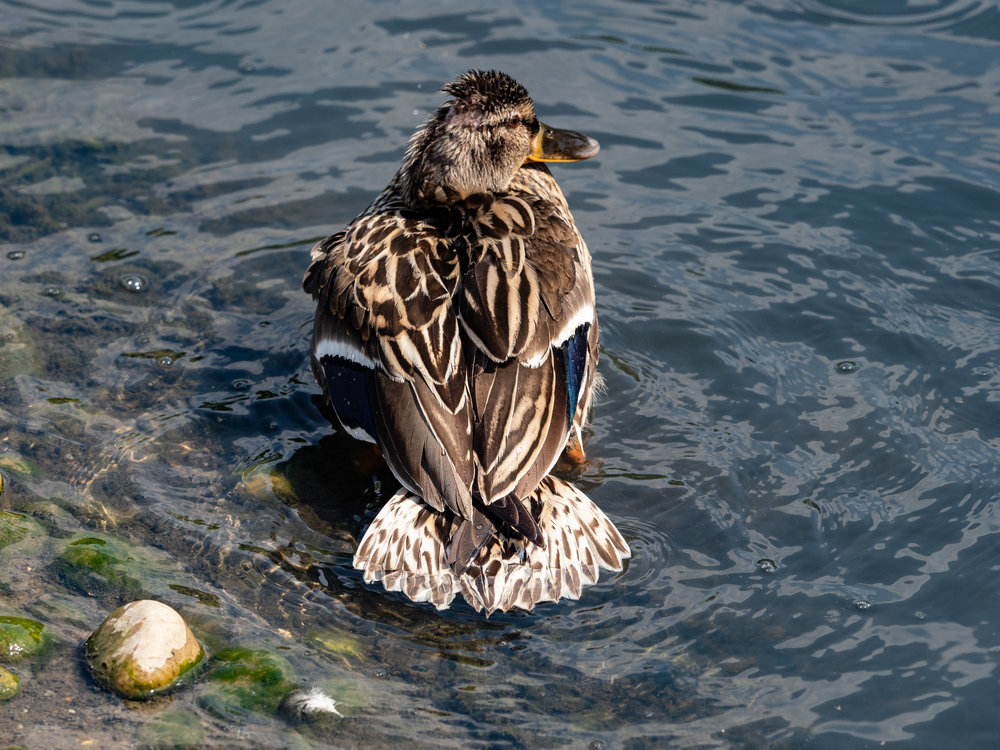
In case you are wondering why there are so many pictures of ducks in this article, let’s go back to basics and remember that it’s all about the Olympus and its zoom lens. Not about ducks. For my part, I can only get better. I quite like this Wetland lark, so I can return with more cameras and lenses…..
____________


Wonderful opening shot, Mike – crow(?) with attitude.
Ah! A man who knows. A crow! I thought I was safe calling it a black bird. But it is a nice shot, although initially a little underexposed and recovery was at the limit as Mahesh indicates elsewhere in this thread. Thanks for the kind comments
I keep coming back to this post because of the “crow” or black bird. That picture alone justifies owning the Oly. I love that picture and the “gesture” captured and the light separating the bird with attitude. Most bird pictures do not grab me as they are the boring “bird on a twig” that is suitable for the bird identification guide. Thanks for blessing us with this image and web site.
To the pantheon of great explorers, which includes Burton and Speke, Lewis and Clarke, can now be added I am sure the names of Evans and Oly. After collecting supplies, they trekked fearlessly out to the wetlands of Barnes, several miles towards the headwaters of the mighty Thames. Braving the attentions of the local tribes people, they returned at last, laden with superb pictures of species of fowl and ducks until now unknown to science. I could go on in this vein…..
Well done, Mike. I am seriously impressed by your ability to take a new camera and lens out like this and bag so many good shots. I very much like the action shots of the heron landing and the traffic police-duck and the wet ducks too but they’re all good.
I laughed out loud many times at your humour and your captions. Your writing is most entertaining while conveying all the necessary information.I think you share the lightness and sureness of touch of Jerome K Jerome who also explored the wetlands of the Thames valley! I don’t think he took a camera?
Dear David,
Many thanks and for the added wit. Didn’t I say you should write for Macfilos sometime? To be honest, I too was surprised by these shots and I was quite serious they plaudits should be directed to the camera rather than the organ grinder. I just pointed the think and pressed the trigger. The rest is down to the camera’s clear abilities.
I particularly love your bathing ducks images. I, after much soul searching, recently purchased the Panasonic Leica 200 2.8 and then the Oly 40-150 and love both lenses. The 200 has incredible melting moments bokeh and superlative sharpness. The ally is also sharp but it has typically less than melting zoom bokeh on busy highlight backgrounds. They both are fabulous glass.
Brian, thanks. I love the bathing ducks shots, too, particularly water off a duck’s back. If I’d tried to get that I would have failed. Would you believe the camera was set to Intelligent Auto on this shit?
Brian, I forgot. The 200mm is a great lens and I would love to try it. Sadly the cost is so higher that I would have to be truly committer to wildlife and sports photography and the 50-150 Leica DG seems the more sensible all rounder for my money. It is love to try that 200.
I am using the 200 as a general purpose lens and find it incredible for people portraits in the street and it focuses so close that you do not need a macro lens. I only purchased the Oly zoom as I got a fabulous deal on it and will use it for when I need the flexibility. It may sound extravagant but I have sold off a lifetime of investing in various glass including Leica and am finding MFT with the G9 bringing newfound joy in the amazing glass and the small size for extreme telephotos. I got rearended 3 weeks ago by distracted driver (smart phone, stupid driver) and suffered acute concussion and whiplash. I cannot carry camera bag right now but it was fortuitous that I went MFT. When I can remember my wife’s name ( I find my juvenile humour keeps me young and keeps me moving forward) I will submit some articles for your consideration on things like why would one own a 12mm 1.4 as well as the amazing 12-60 Pana(hey, I am more curious than probably you are) or can a long telephoto be used for shooting other things than birds? Well, I must return to my 🍷 medication and ponder what other camera equipment the distracted driver is going to buy me – Oh, I am starting to see the Snow White special edition Leica Q….
You made me chuckle for this article Mike, your description of the birds is akin to mine – yep for me they have feathers.. eureka they are birds.. Ducks, Geese, Swans etc are obvious in shape dimensions and colour, but beyond that I know nothing.
The images are excellent and show off the camera and lens to a tee. However this one isn’t on my short list.
Dear Dave. Thanks. I do like ducks but I’d better steer clear of them for a few weeks or it will get burning.
Very nice photos – and yes, it is a cracking lens.
Incidentally, if you are shooting hand-held and take the tripod foot off you shave quite a lot of the weight too (more than 100g).
Thanks, Mark. Since I didn’t intend to use a tripod at all during my time with the camera and lenses, I left the tripod foot with Olympus. This reminds me to check if (as you imply) the foot is included in the weight. I had assumed not and I need to put the lens on the scale. I will add an explanation in the text. Thanks for the heads up.
Mark,
I put the 40-150 Olympus on the scale and, with hood but without end cap and without tripod foot, it weights 870g. Without the hood it is 745g. Since I don’t have the tripod foot I can’t weigh it but your estimate of 100g seems reasonable. So that means the complete ensemble is 970g. Although I don’t have it to hand to weigh, the Lumix Leica DG 50-200 has a states 655g weight which is interesting. It must be the constant aperture of the Olympus lens that bumps up the weight.
Impressive definition, focus and colour from that lens and associated u4/3 sensor, Michael. It certainly put you in a good mood for the write-up too. Loved the text as well.
Many thanks, Wayne. I must say I was pleasantly surprised by the results and they have created a lust to own a similarly long lens. I’ve toyed with the Leica DG 50-200 because it goes better with the G9. But if I had an Olympus body I would buy this cheaper M.Zuiko zoom without hesitation.
Lovely photos Mike. You are lucky to have such a centre so close to home for you. That chap at the top could have got a part in a Vincent Price film of one of Poe’s stories. As for identifying the rest of birds, I know one or two of them, but when it comes to bird identification ‘all of my geese are swans’.
That Olympus lens seems to be very good and to be on a par with its Fujifilm equivalent, which I am using now. The Olympus is actually slightly lighter than the Fujifilm lens. At one stage I used Nikon cameras and lenses for such shots but the cameras and lenses seemed to get much bigger and heavier as I got older. Most camera systems can produce very good images nowadays and the real distinguishing features have to be factors like functionality, weight and size. In other words, a lot of the decision about what system to use is down to personal factors.
William
I think you are right on all modern cameras producing good results. Obviously, in terms of reproduction here on Macfilos or any other web page for that matter, it is difficult to tell the difference between micro four-thirds and full frame (or, let it be said, iPhone….). For professionals and those wanting extreme subject separation, FF or MF does make sense.
Hi Mike great pictures as always and more so with the sharpness from this lens. Look forward to your review of 12-40. It has been reviewed by many but I have hold off buying it as I’m not too sure. Some love it, some say it is clinical like most Olympus lenses. I’m in fact getting back into micro 4/3 with an em10iii and panny 15/1.7 and Oly 25/1.8. might get panny 7-18 later. Anyway, I am going to disagree with you on the FF and Mf point as the dynamic range almost always shows the difference, to me.
Mahesh,
Thank you. You are quite right on the better dynamic range on FF or MF. I didn’t explain this well. I noticed this particularly with some of the underexposed shots from the recent visit to the Wetlands. There is definitely not as much recovery possibility as I am used to with full frame or, even, APS-C. This, together with the narrower depth of field are good reasons to pay for the larger sensor and suffer the weight penalty. On the other hand, the results from m4/3 are still very acceptable.